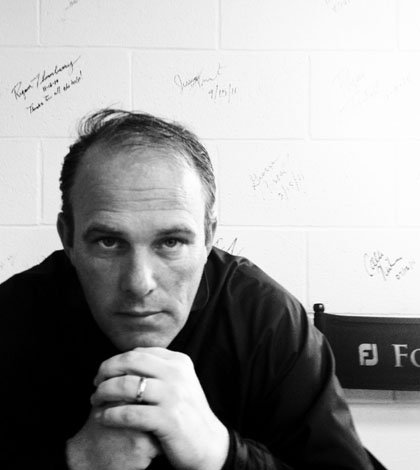Part I - http://3jack.blogspot.com/2015/08/the-search-for-flatstick-nirvana-part-i.html
Part II - http://3jack.blogspot.com/2015/09/the-search-for-flat-stick-nirvana-part.html
Part III - http://3jack.blogspot.com/2015/09/the-search-for-flatstick-nirvana-part.html
Part IV - http://3jack.blogspot.com/2015/09/the-search-for-flatstick-nirvana-part_9.html
Part V - http://3jack.blogspot.com/2015/10/the-search-for-flatstick-nirvana-part-v.html
I had come across David Orr’s Flatstick Academy Web site thru my interview on Tony Wright’s Podcast (http://3jack.blogspot.com/2015/09/interview-with-tony-wright.html)
For those that don’t know, the irony of this is that David grew up about 15 minutes from my hometown in New York. At the time, David was playing the Ben Hogan Tour (now the Web.com Tour) and was an excellent ballstriker that struggled badly with the putter. In fact, David gave me a swing lesson when I was in 10th grade (one of only 2 lessons I ever had before I went to college).
Here is the Web site link to the Flatstick Academy. Membership is only $10 a month with no commitment. He updates the site every week with new videos and articles on putting.
I was a bit skeptical of the site in trying to determine what my issues were with putting and how to apply it to my putting. But, I’ve found that in particular the student lesson videos are extremely helpful because there is such a variety of golfers with different putting issues which have different symptoms and different plans for those problems that I started to determine what some of my issues were.
The other thing I really like about the FlatstickAcademy.com is that you can see David’s influence from M.O.R.A.D., Stack and Tilt and The Golfing Machine in the sense how he has cataloged the biomechanics of the putting stroke and it’s not about what is ‘right’ or ‘wrong’ or what is ‘good’ or ‘bad’, but more about understanding the movements and trying to make biomechanical pieces of the entire putting process compatible.
One theme of David’s work is that we want the arc of the stroke and the face rotation to come close to ‘matching.’ If you have a wide arc, you’ll need more face rotation. If you have a small arc, you’ll need less face rotation and vice versa.
So, if you have a posture like Michelle Wie’s, it is compatible with a smaller arc and therefore less face rotation.
So if one utilizes the Wie stance and had a wider arc, then perhaps there is something they are doing biomechanically that is creating that wider arc such as how their arms are position at address. And I *think* David’s philosophy is to determine if the player needs to either change their arm position to have a narrower arc or change their posture to fit their arm position and arc.
And unlike a lot of other instruction in different areas of the game, David doesn’t have a particular preference. If you want to putt left hand low, so be it. Let’s figure out what the student has to do in order to putt better left hand low. Same with the armlock method, anchoring or whether you want to use a high MOI putter, blade putter, Anser style model, etc.
I do believe in golf that it is a more prudent way to learn by figuring out what the greats had in common. I think too much of swing instruction relies on looking at ‘the Tour average’ or even worse, looking at some player on Tour that ‘looks pretty’ instead of looking at a player that is actually an excellent ballstriker. We see a lot of Stuart Appleby swings on YouTube and he’s more or less a mediocre ballstriker, but we see very few swings of players like Jim Herman, Kevin Chappell and Charles Warren who are far more skilled ballstrikers.
With putting, I think there are FEWER similarities by the legitimately great putters compared to the swing similarities of the legitimately great ballstrikers. Carl Pettersson and Scott McCarron used the broomstick. Crenshaw used a blade with a very wide arc and a large backstroke. Loren Roberts actually cut across his putts (albeit slightly). Brandt Snedeker has a ‘wristy pop-stroke.’ Daniel Summerhays is much more hunched over than Jimmy Walker or Aaron Baddeley who has his forearms much more on plane than Walker. Therefore, I tend to believe it’s more important to understand all of the biomechanics. And David shows his influence from Geoff Mangum as he can thoroughly discuss neuroscience with putting. Combine that with his nearly 25 years of teaching, he actually knows how to teach golfers so he can take his knowledge and apply it to the student so they can implement it into their putting.
***
With that, I started to make some changes. I felt that I had the following issues with my putting:
1. I didn’t see the lines well and I was worried that my aim, which has usually been awful, was still poor.
2. I felt that I had a small arc type of stroke but had too much face rotation.
3. My backstroke was too slow.
I decided to change the following based on watching David’s videos on the Flatstick Academy:
- Change my grip in hopes of reducing the amount of face rotation
- Change the position of my elbows in hopes of increasing the stroke arc a little.
- Make sure to keep my foot pressure stable and towards the ball of my left foot in hopes of avoiding a ‘cut-across’ stroke.
I felt my backstroke was too slow, but I didn’t know exactly what the timing of the backstroke was, so I wanted to get on a SAM Puttlab to get a confirmation. I then went to see Billy Ore at the PGA Village to get on his SAM Puttlab and see what he thought.
3JACK


No comments:
Post a Comment